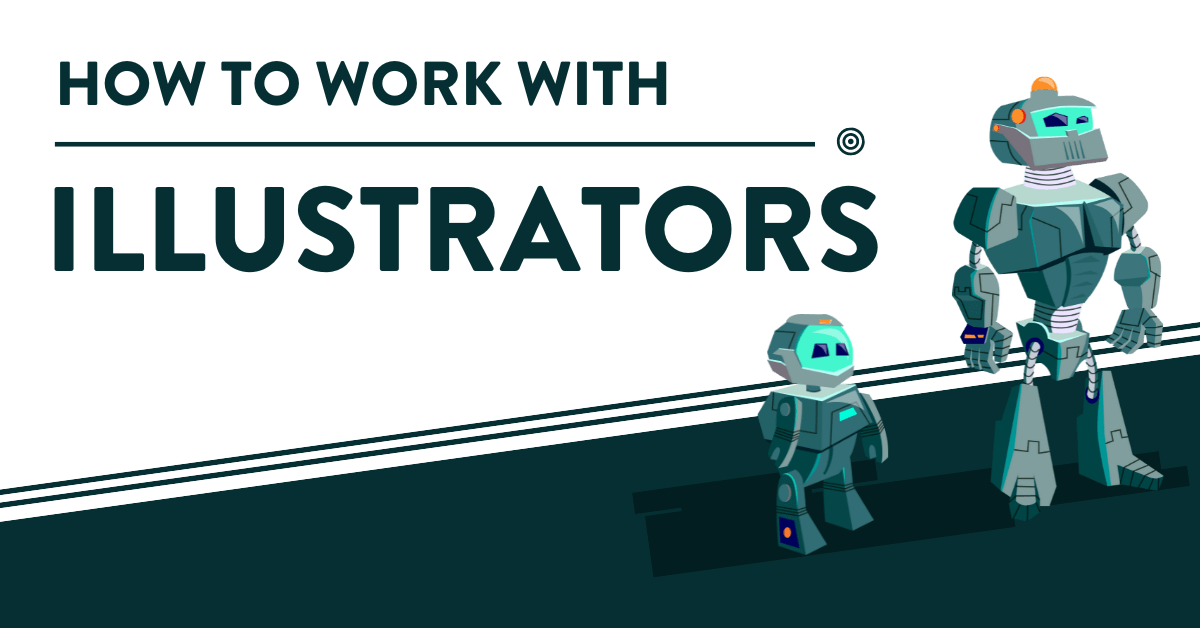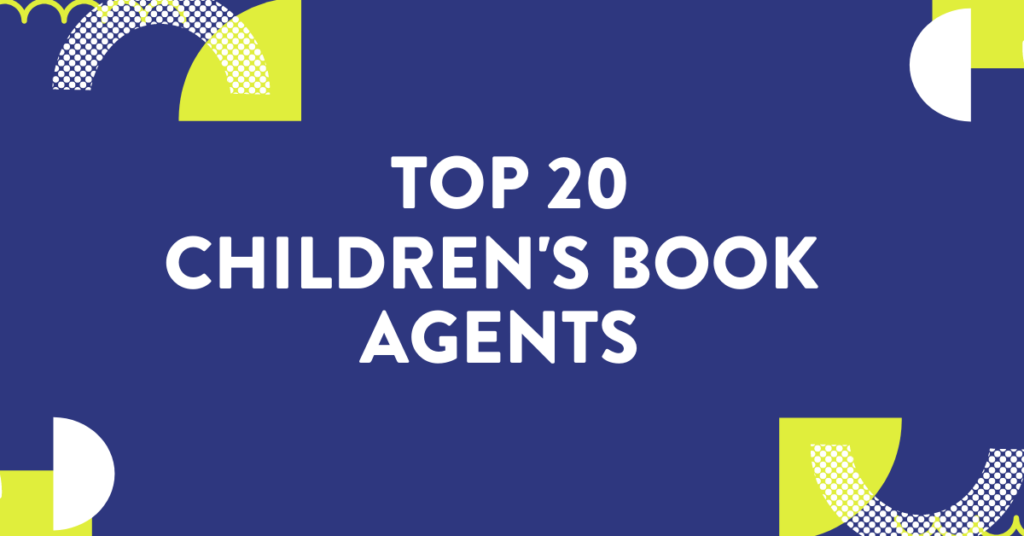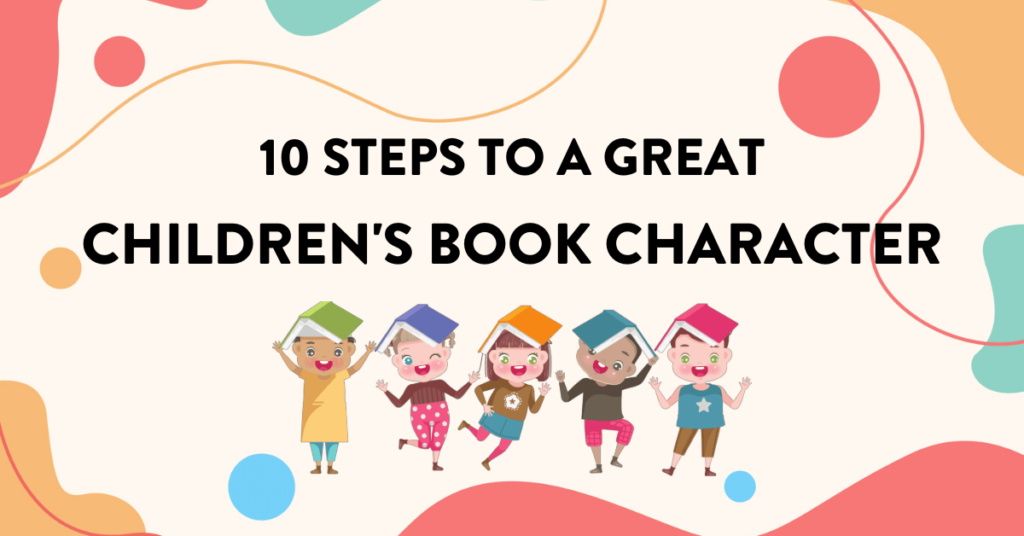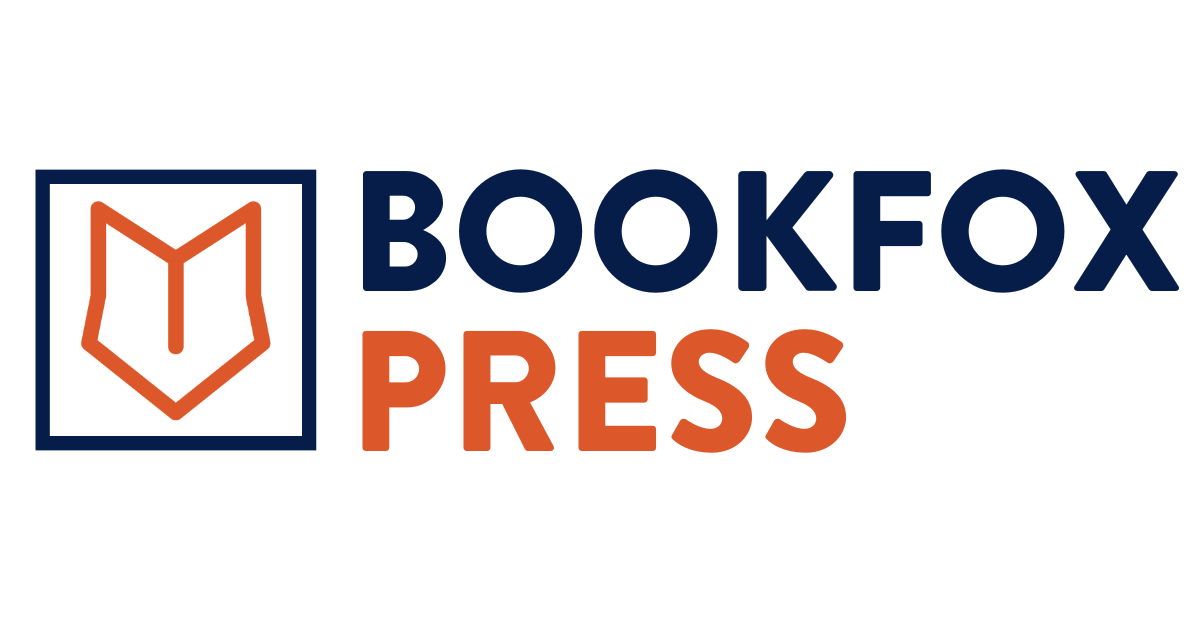
1. Pick the Right Illustrator
Illustrators get paid more than children’s book writers (sorry, but it’s kind of the worst kept secret in the industry).
That’s because the illustrations of a children’s book make or break your story. Yes, your words are important, but the illustrations are even more important.
That’s why it’s important to pick the right illustrator.
You should look at their previous work to get a sense of:
- Style. Does it jive with what you want your book to look like? Although remember that you want to be flexible about this.
- Testimonials (have other authors enjoyed working with them?)
- Range — can they only do a single style, or do they adopt their style based on the book? For instance, I’ve worked with one illustrator who can do both a hand-drawn watercolor illustrations, as well as more digital-looking illustrations. I’ve had her use each of those styles for different books.
2. Establish the Relationship
Before you begin, you want to figure out what this partnership is going to look like.
Some illustrators want complete artistic freedom, while others want you to tell them what the image will be on every single page.
The more expensive your illustrator, the more freedom they want (the opposite is also true: the cheaper the illustrator, the more guidance they want).
Here are some questions to establish the working relationship between you and your children’s book illustrator:
- How many revisions do I get to request?
- Are you open to direction or do you prefer to work without my feedback?
- How does this collaboration process work?
It’s important to realize it’s a partnership, not a dictatorship. If you’d like more information on how to work with an illustrator, I’d suggest that you take my children’s book course.
3. Trust your Illustrator
Your illustrator is going to come up with ideas that you never would have imagined.
That’s fantastic! That’s what you’re paying them for!
When a writer and an illustrator get together, they’re not just stapling pictures to words. No sirree! They’re crafting an experience, a fusion of text and art that sings a harmonious song.
Ideally, an illustrator will not just repeat the ideas in the text, but add to those ideas with:
- Humor – illustrators can make all sorts of little jokes that the text can’t
- Descriptions – there’s not space in the text to talk about the color of the houses or hair or mountains, so let the illustrator do all that extra work
- Specificity – the text might only say that the little mouse got dressed, but the illustrations can show that she dressed in a wild, mismatched outfit, or did her hair in a weird way, or dressed all in neon orange.
4. Don’t Smother
Some authors have such a specific vision in their heads for what they want their book to look like, they don’t allow any space for the illustrator.
This is the worst thing you can do.
- Constant oversight can stifle an illustrator’s creativity.
- Nitpicking can erode confidence and trust in the partnership.
- Over-direction can make the final product feel contrived and less organic.
Give some free rein to your illustrator! You hired them because they’re good at what they do, so let them do it. You’ll end up with a book that’s not so great if you insist on micro-managing every step of the process.
5. Respect the Process
Every illustrator will have their own unique process to work with the author.
- Some illustrators want you to describe what you envision for every page of the book
- Some illustrators will do a sample page, just to make sure both of you are on board for the look and feel of the illustrations
- Some illustrators will sketch out a black and white outline of whole book before they fill in all the colors and all the details
The author should just roll with that process, because the illustrator will work best when working inside the groove of their unique work flow.
Their processes might seem mystifying — perhaps they sketch at odd hours, or maybe they find inspiration in the most unexpected places. But remember, this is their rhythm, their unique way of teasing out the story’s soul and presenting it visually.
6. Be Patient
You are asking for 26 original artworks. This doesn’t happen in a few weeks. It will take time, and you need to be patient.
No illustrator wants to work with an author who is demanding a time frame that is unreasonable.
This is a typical timeline when working with an illustrator:
- Character sketches – one week. They want to make sure everyone is on the same page about what the main characters look like
- Initial sample page – one week. There will be a feedback process after creating this
- Concept Sketches – two weeks. This is usually a black and white sketch of every page in the book. The illustrator doesn’t want to waste time drawing everything if the author has vastly different ideas about the illustrations.
- Coloring and Details – one to three months. This time frame can vary wildly. Sometimes this step can take up to 6 months.
- Revisions – one to three months. This time frame really depends on how many changes you’re asking for.
Most authors are surprised by how long illustrations take, but as long as you’re patient and the illustrator communicates their timeline clearly, it should go smoothly.
7. You Get What You Pay For
If your budget is on the leaner side, that’s okay! There are fantastic emerging illustrators out there who can do wonders. But, temper your expectations. Know that while their work will be beautiful, it might not have the same flair or depth as a pricier, more experienced illustrator.
You can’t pay an illustrator $1000 and expect that they will give you $30,000 artwork. I know illustrators that are paid 30k – 60k a book (you can’t hire them — they only work with the big publishers).
Even though your favorite book’s illustrations are incredible, most authors don’t have the deep pockets or resources to be able to pay what publishers pay professional illustrators.
Just make sure you know what $1,000 illustrations look like, what $3,000 illustrations look like, and what $10,000 illustrations look like. I actually talk about illustrator pricing in my post, “How to Write a Children’s Book in 12 Steps.”
8. Give Feedback like a Pro
Let’s talk etiquette, specifically, the gentle art of communicating changes to your illustrator without bruising any creative egos.
Firstly, always begin with appreciation. Start your conversation by pointing out what you absolutely loved about their work. Did a particular illustration capture the essence beautifully? Did a character’s expression melt your heart? Tell them! It sets a positive tone and makes it evident that you respect their artistry.
For instance, say something like:
“I’m blown away by the way you’ve captured the mood in the forest scene. The lighting is just magical. However, I had a few thoughts on the protagonist’s attire. Would it be possible to discuss?”
Next, be specific with your feedback. Instead of a vague “This doesn’t feel right,” pinpoint the exact element that’s off. Maybe it’s a color that doesn’t match the narrative’s tone, or perhaps a character’s expression isn’t quite on point. By being precise, you make the revision process smoother and more efficient.
“I loved how vibrant the marketplace looks. But would it be possible to make the fruit stalls a tad more colorful to match the festive mood I described?”
Always use collaborative language. This isn’t about dictating changes but working together to bring the best version of the story to life. Try phrases like
- “Can we try…”
- “What are your thoughts on…”
These invite discussion rather than just instruction.
For example:
“What are your thoughts on giving the dragon softer eyes? I feel it might align more with its gentle nature in the story.”
If you’d like more feedback on your own story before you start giving feedback to an editor, I can help you with a developmental edit for your children’s book. This is where I write a feedback essay about your characters, plot, pacing, dialogue, themes, beginning/ending, and everything else in your book.
9. Text and Typography
Whose job is it to set the text and typography? Well, that question is actually harder to answer than you think.
When you think of your favorite picture books, there’s a good chance the text isn’t just plonked anywhere. It’s thoughtfully intertwined with the illustrations, almost dancing with the images.
And who choreographs this dance? In many cases, it’s the illustrator. Yes, many illustrators are also deft at selecting fonts, positioning text, and ensuring it harmoniously blends with the artwork. They understand where the viewer’s eye will wander, and they place text to complement that journey.
But here’s the kicker — not all illustrators are into this. Some, quite understandably, see their role as purely visual. They create the world, the characters, and the scenery. They’re not necessarily typography aficionados or layout wizards. For them, working with the text might be outside their purview, a task best left to designers or the author.
So before you start the process with your illustrator, clarify exactly who will be doing the text and typography arrangements. Picking a font and designing the text is honestly one of the hardest parts of a children’s book — don’t underestimate how much skill it takes.
10. Contracts!
Let’s demystify one of the essential, albeit slightly unsexy, aspects of the collaboration between writers and illustrators: the contract.
Why’s it so vital? Imagine hosting a grand party (your book project) but without setting any house rules (the contract). Chaos, right? Now, onto the nitty-gritty.
Types of Contracts:
- Work-for-Hire Agreement: In this type of contract, the author essentially ‘buys’ the rights to the illustrations. Once the project is done, the illustrator has no further claims to their work. Only the lowest paid illustrators will agree to this type of arrangement, because it means that the illustrator doesn’t retain copyright.
- Royalty-based Agreement: Here, the illustrator gets a percentage of the book’s sales. This is a common choice when both the author and illustrator are investing equal creative efforts into the project. This way, both parties benefit from the book’s success. This is the most common type favored by publishing houses, but usually most freelance illustrator don’t use this model.
- Licensing Agreement: Instead of buying illustrations outright, the author might license them for specific uses – like for a first print run or for digital formats only. This means the illustrator retains some rights and might get paid again for reprints or other uses. This is the model that Bookfox Press uses. The author gets perpetual, irrevocable license to use these illustrations in their book. This helps the illustrator to be happy (they retain copyright) while also satisfying everything that the author needs for their book.
Watch Out for These Potential Pitfalls:
- Vague Terms: Every detail, from payment schedules to deliverable deadlines, should be crystal clear. Ambiguity is the root of many a dispute. For example, instead of “timely payment,” specify exact dates or milestones.
- Rights and Usage: Be very clear about what rights you’re purchasing or licensing. If you’re planning on merchandising or adapting the book later, those rights need to be discussed upfront.
- Revision Clauses: How many revisions are included in the initial fee? Some illustrators might offer two rounds of revisions and then charge for any additional changes. Clearly outline this to avoid unpleasant surprises.
- Kill Fees: Sometimes, projects get canceled. It’s a bummer but it happens. A kill fee is a compensation for the illustrator in case the project is terminated after they’ve started work. This should be stipulated in the contract.
- Payment Schedule: Most illustrators ask for half of the payment up front, and half upon completion.
- Confidentiality and Non-Compete Clauses: If you’ve got a unique concept, you might want the illustrator to keep it under wraps until publication. Also, consider if you’d like them not to work on similar projects simultaneously to keep your book unique.
- Credit and Attribution: Always agree on how the illustrator will be credited. A front cover mention? A dedicated page inside?
- Dispute Resolution: It’s something nobody wants, but it’s wise to be prepared. Detail how disputes will be handled – mediation, arbitration, or court proceedings? And in which jurisdiction?
- Duration of the Agreement: Especially in royalty or licensing contracts, specify the duration. Is it for a year, five years, or the lifetime of the book?
11. Breaking Up with an Illustrator
In my time at Bookfox Press, there has only been one time when the author asked to breakup with an illustrator.
In the end, we were able to step in and facilitate the communication between the parties, and they ended up finishing the book together (it was more a communication issue than a creative difference). But you should know how to breakup with your illustrator — if it’s truly necessary.
Sometimes, despite our best intentions and efforts, collaborations hit a rocky patch. Maybe the vibe isn’t right, or creative differences become too vast to bridge. If you’re at a point where you’re considering a break from your illustrator, it’s essential to do it with tact, grace, and professionalism. Let’s navigate these tricky waters together.
- Open Dialogue: Before making any final decisions, set up a conversation. Maybe it’s a simple misunderstanding that can be cleared up. Start with, “Hey, I’ve been feeling like our visions aren’t aligning lately. Can we talk about it?” Clear, direct, but not accusatory.
- Be Honest but Kind: If you’ve made up your mind, be truthful about why you think the collaboration isn’t working. Perhaps it’s a difference in style, pace, or interpretation. Use “I” statements to avoid sounding like you’re laying blame. For instance, “I feel like I’m looking for a slightly different approach,” rather than, “You’re not capturing what I want.”
- Refer to the Contract: This is where that contract we talked about earlier comes in handy. There should be clauses in place that explain the procedures and any potential financial implications of ending the collaboration early.
- Professional, Not Personal: Emphasize that your decision is based on the project’s needs and not personal feelings. It’s about the work, not the individual. A statement like, “Your art is incredible, but I think I need something different for this specific project,” can convey this.
- Offer Recommendations: If possible, recommend them for other projects or to other authors. Just because they weren’t the perfect fit for your project doesn’t mean they won’t be fantastic elsewhere.
- Express Gratitude: Thank them for their time and efforts. They’ve put in hard work, after all. A simple “Thank you for your dedication and creativity so far” goes a long way.
- Final Deliverables: Make sure to wrap up any pending tasks. This could be final payments, returning any resources, or handing over work done up to that point.
- Consider Offering a Kill Fee: As mentioned before, if your illustrator had blocked off a significant amount of time for your project and you’re ending prematurely, a kill fee (as stipulated in the contract or as a goodwill gesture) can be a fair way to compensate.
Breaking up is never easy, especially when it involves creative endeavors. But if approached with empathy, respect, and professionalism, it can lead to better outcomes for both parties. And remember, each collaboration, successful or otherwise, is a stepping stone, a lesson in the grand journey of creation.
12. FAQs
- Why can’t I just illustrate my own book?
- This is almost always a terrible, terrible idea (sorry!). While some authors can and do illustrate their own books, it’s essential to ensure the illustrations are professional quality. Often, an experienced illustrator can add depth and dimension to the story, bringing a fresh perspective to the narrative.
- How do I find the right illustrator for my book?
- Researching illustrators online, attending book fairs, or joining writer and illustrator groups can help. Look for an illustrator whose style aligns with your vision and story’s tone.
- How much does it cost to hire an illustrator?
- Costs can vary based on the illustrator’s experience, the complexity of the work, and regional factors. Always discuss and agree upon fees upfront.
- Can I ask for revisions in the illustrations?
- Yes, but the number and extent of revisions should be outlined in your contract to avoid misunderstandings.
- How long does the illustration process usually take?
- This varies depending on the book’s length, the intricacy of the illustrations, and the illustrator’s process. Setting a timeline upfront is always beneficial.
- Should the illustrator receive credit in the book?
- Absolutely. Proper attribution not only acknowledges their work but is often a stipulated requirement in contracts. It always rubs me the wrong way when an author demands their name is the only one on the front cover (yes, it has happened multiple times in my time at Bookfox Press.) Give credit where credit is due — the illustrator worked hard on your book.
- What if my publisher already has an illustrator in mind?
- Publishers select their own illustrators, and you don’t really get a say in who it is. If you want complete control over who illustrates your children’s book, you can work with us at Bookfox Press or you can strike out on your own.
- How can I ensure my story’s essence is maintained in the illustrations?
- Communication is vital. Before starting, share the story’s mood, themes, and any essential symbolism with the illustrator. However, also be open to the illustrator’s interpretation and creativity.
- Do I pay the illustrator, or does the publisher handle it?
- This depends on your publishing route. If you’re self-publishing, you’d handle illustrator payments. If you’re going through a traditional publisher, they typically manage illustrator compensation.
- Should I get a copyright for my book?
- This is a tough question to answer (it’s complex). Check out my blog post on copyrighting children’s books.



